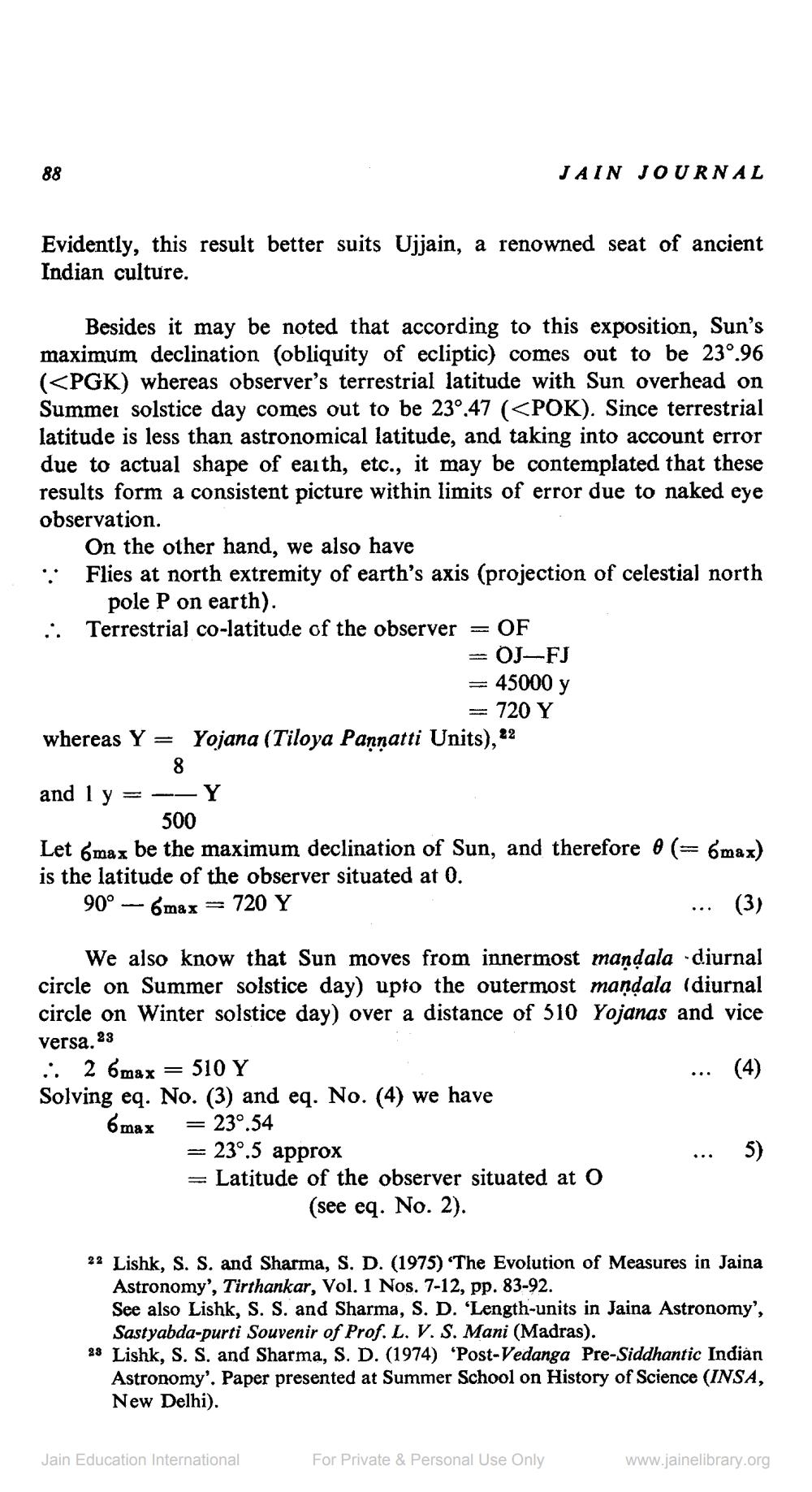________________
88
Evidently, this result better suits Ujjain, a renowned seat of ancient Indian culture.
Besides it may be noted that according to this exposition, Sun's maximum declination (obliquity of ecliptic) comes out to be 23°.96 (<PGK) whereas observer's terrestrial latitude with Sun overhead on Summer solstice day comes out to be 23°.47 (<POK). Since terrestrial latitude is less than astronomical latitude, and taking into account error due to actual shape of earth, etc., it may be contemplated that these results form a consistent picture within limits of error due to naked eye observation.
..
On the other hand, we also have
Flies at north extremity of earth's axis (projection of celestial north
pole P on earth).
Terrestrial co-latitude of the observer
whereas Y
=
-
8
Yojana (Tiloya Panṇatti Units), 22
Y
=
and 1 y
500
Let 6max be the maximum declination of Sun, and therefore (= 6max) is the latitude of the observer situated at 0.
90°
6max
720 Y
(3)
We also know that Sun moves from innermost maṇḍala diurnal circle on Summer solstice day) upto the outermost maṇḍala (diurnal circle on Winter solstice day) over a distance of 510 Yojanas and vice
23
versa.
(4)
JAIN JOURNAL
.. 2 6max
= 510 Y
Solving eq. No. (3) and eq. No. (4) we have
6 max
= 23°.54
==
OF
OJ-FJ
45000 y
720 Y
Jain Education International
23°.5 approx
Latitude of the observer situated at O (see eq. No. 2).
For Private & Personal Use Only
...
22 Lishk, S. S. and Sharma, S. D. (1975) 'The Evolution of Measures in Jaina Astronomy', Tirthankar, Vol. 1 Nos. 7-12, pp. 83-92.
See also Lishk, S. S. and Sharma, S. D. 'Length-units in Jaina Astronomy', Sastyabda-purti Souvenir of Prof. L. V. S. Mani (Madras).
23 Lishk, S. S. and Sharma, S. D. (1974) 'Post-Vedanga Pre-Siddhantic Indian Astronomy'. Paper presented at Summer School on History of Science (INSA, New Delhi).
5)
www.jainelibrary.org




